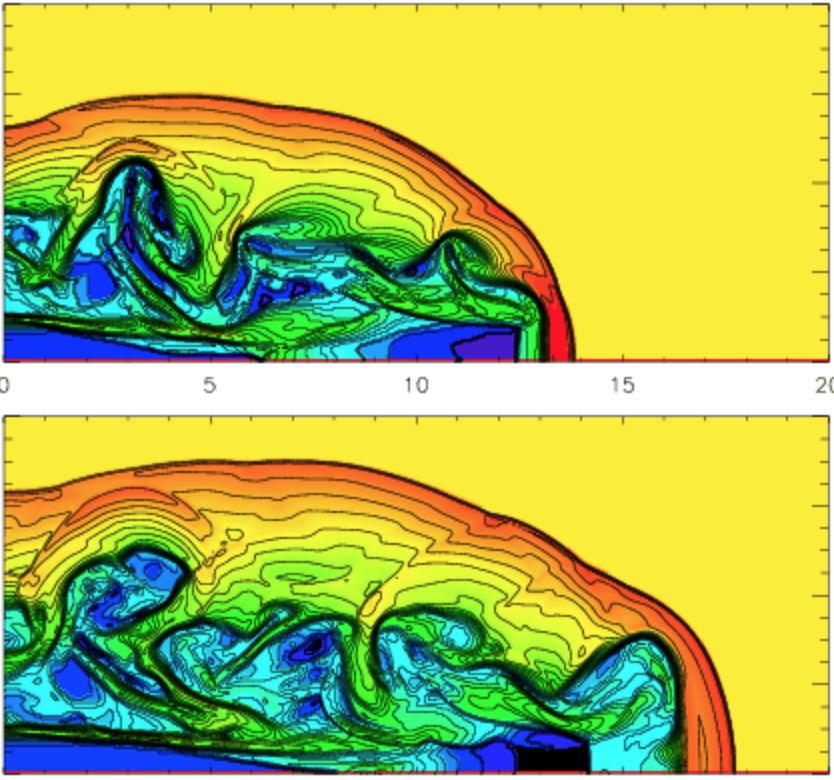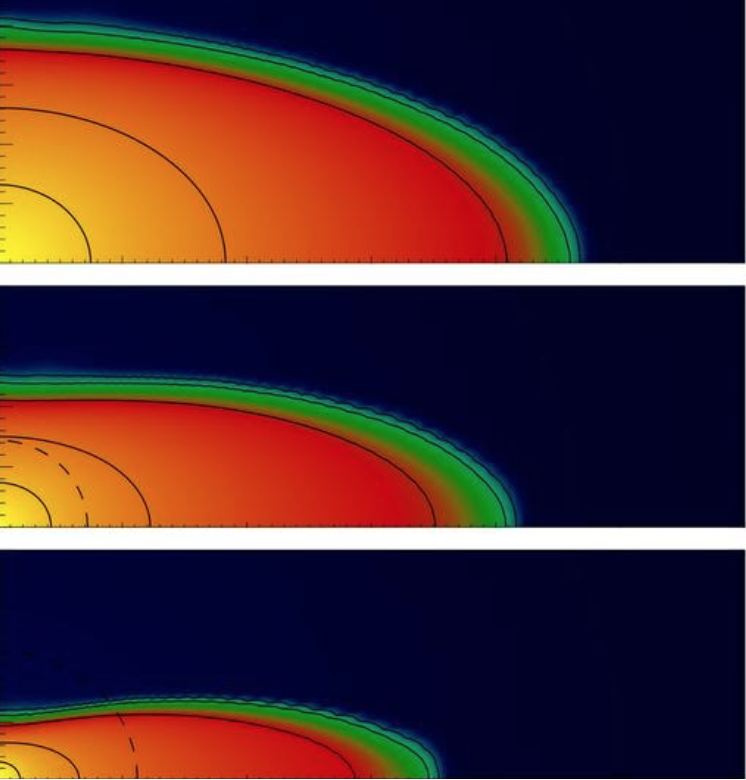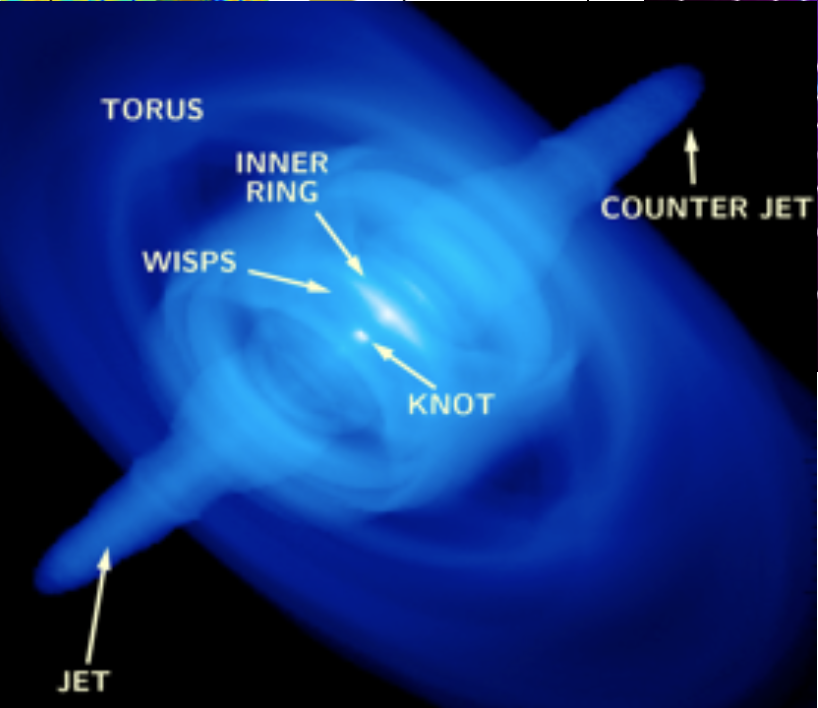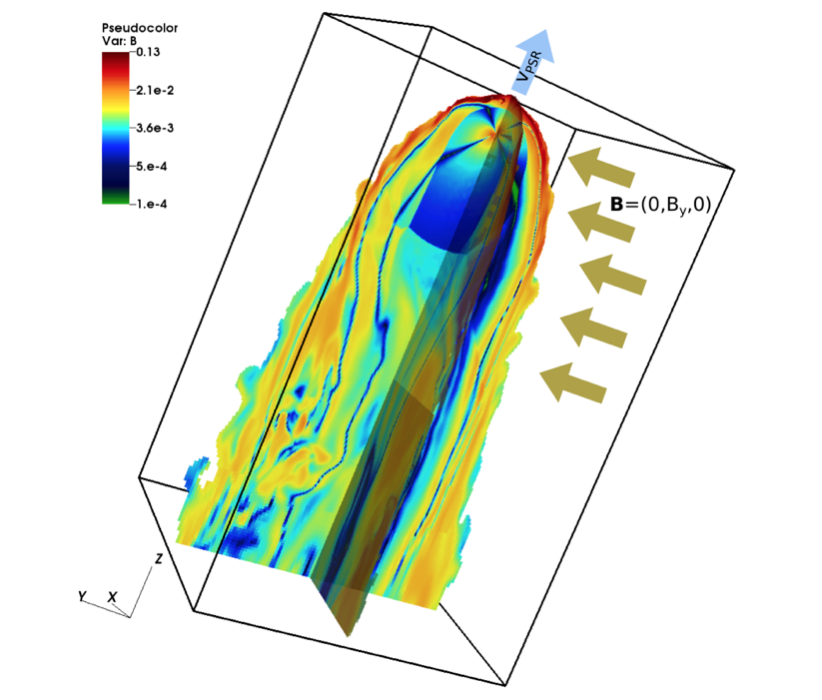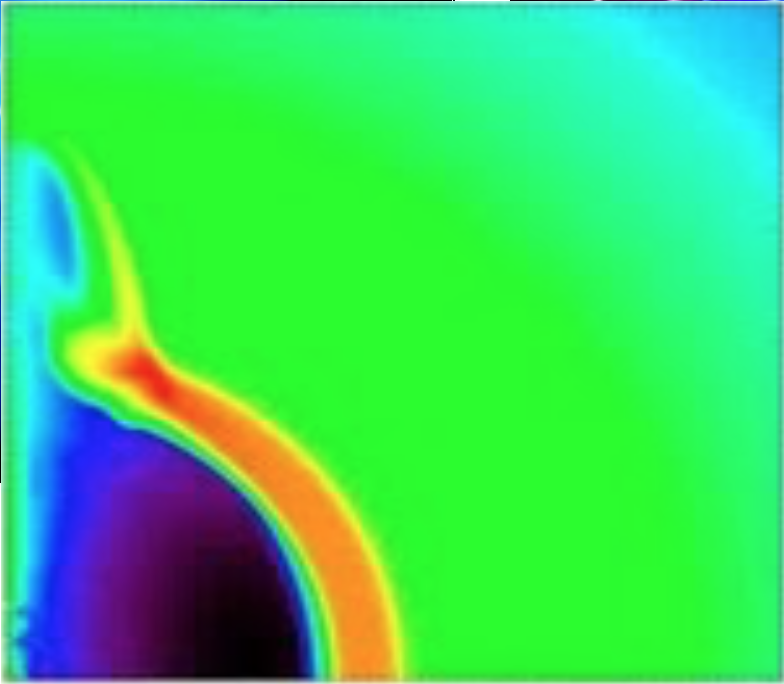The ECHO Code
ECHO is an high order eulerian conservative scheme, that was developed in collaboration with Luca del Zanna, Pasquale Londrillo, and Olindo Zanotti for the study of Special Relativistic MHD and General Relativistic MHD on fixed metric (like Kerr metric for accretion onto a black Hole). The code uses a central type scheme (HLL) in order to avoid the complexity of the full characteristic decomposition. This increase the flexibility of the code (not limited by the knowledge of the eigenstructure of the equations) and the use of high order allows one to reduce the numerical diffusion associated with the central scheme. We are able to achieve Lorentz factor up to ~100. The code properly treats the magnetic monopoles constraint, which is enforced to round off machine error, by using the constrained transport method. The code is currently maintained by Luca Del Zanna.

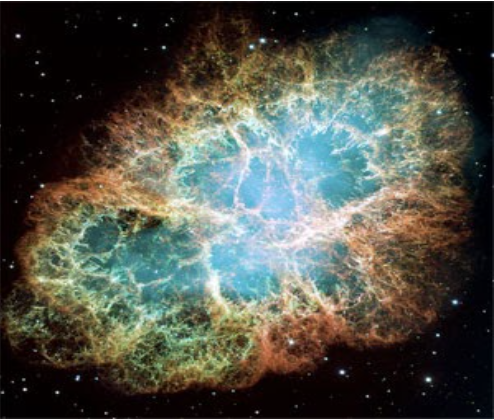 ,
,
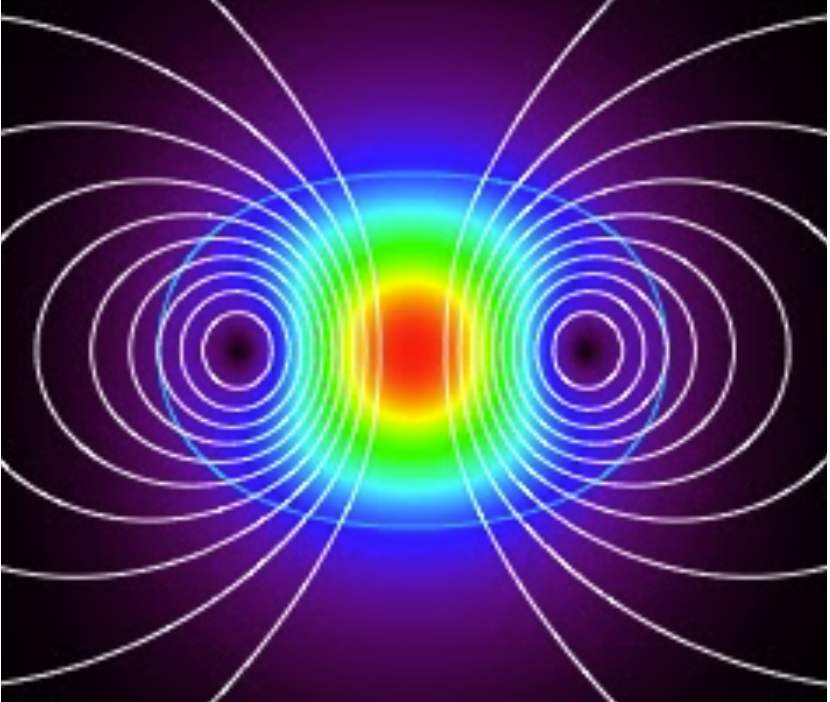 ,
,
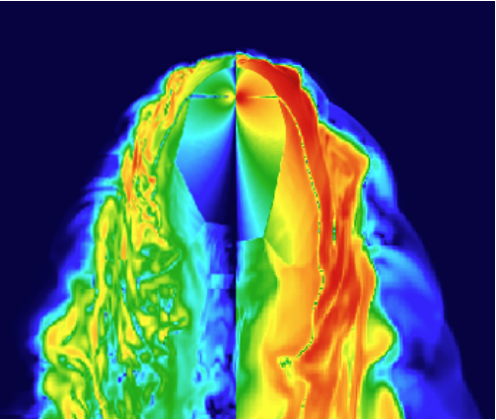 ,
,
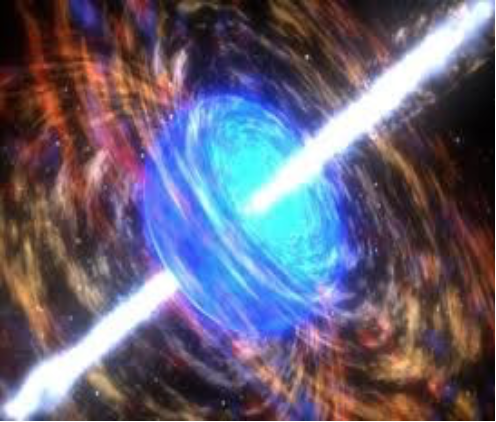 ,
,

